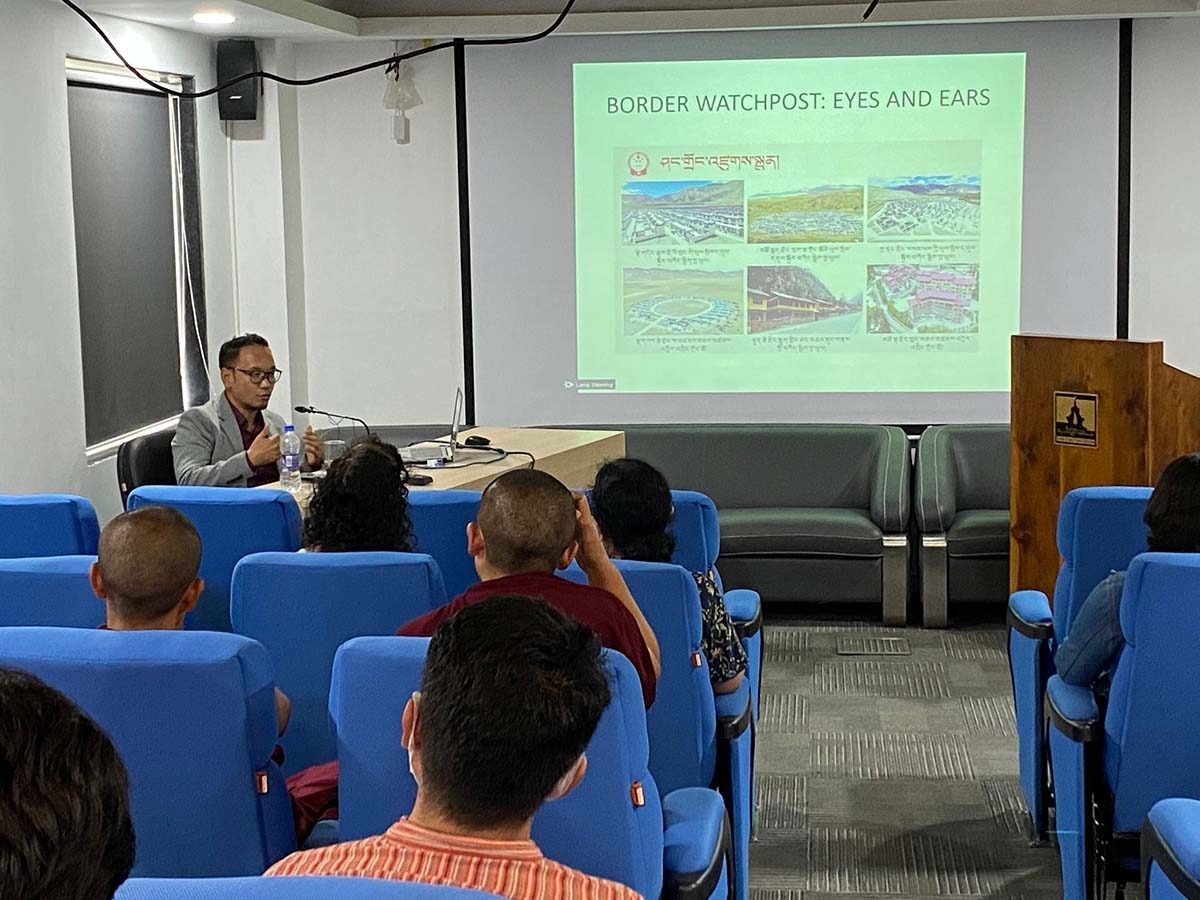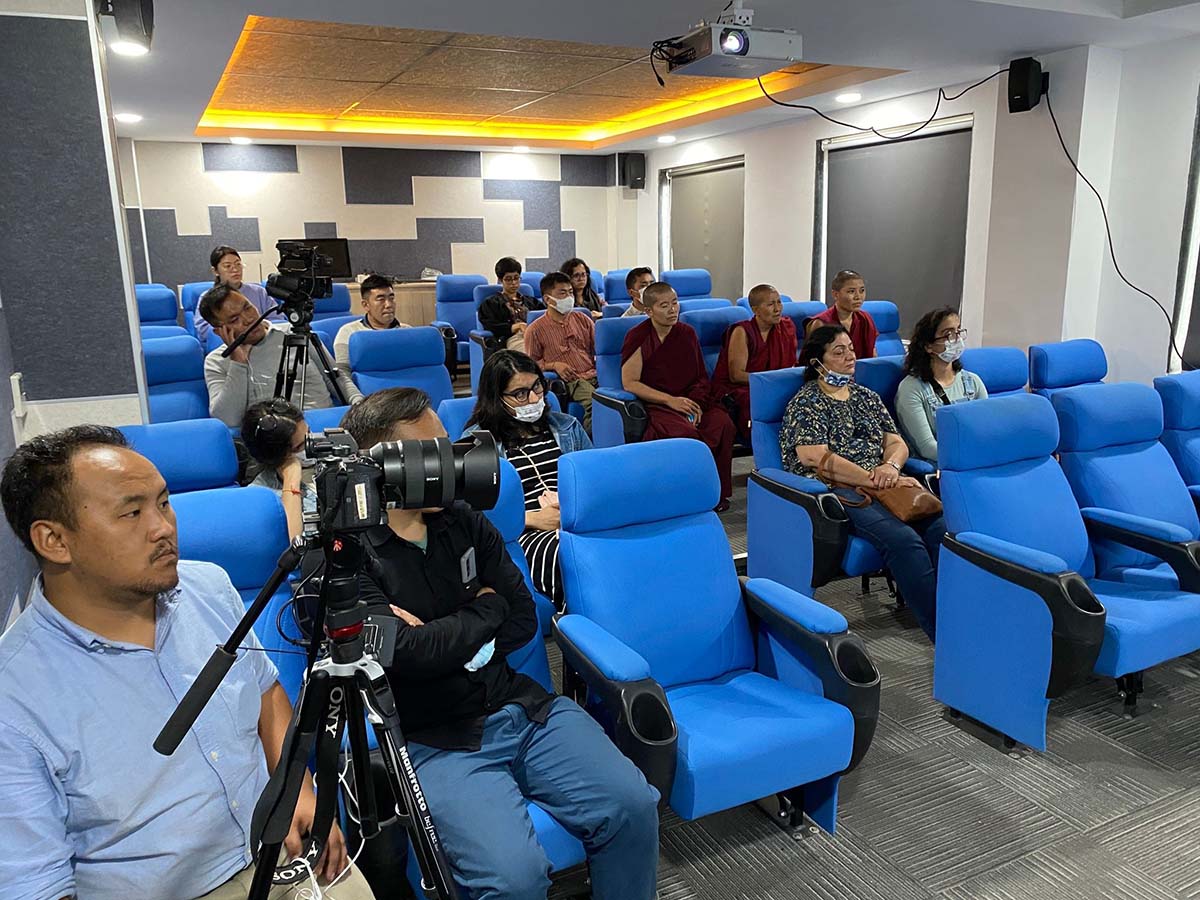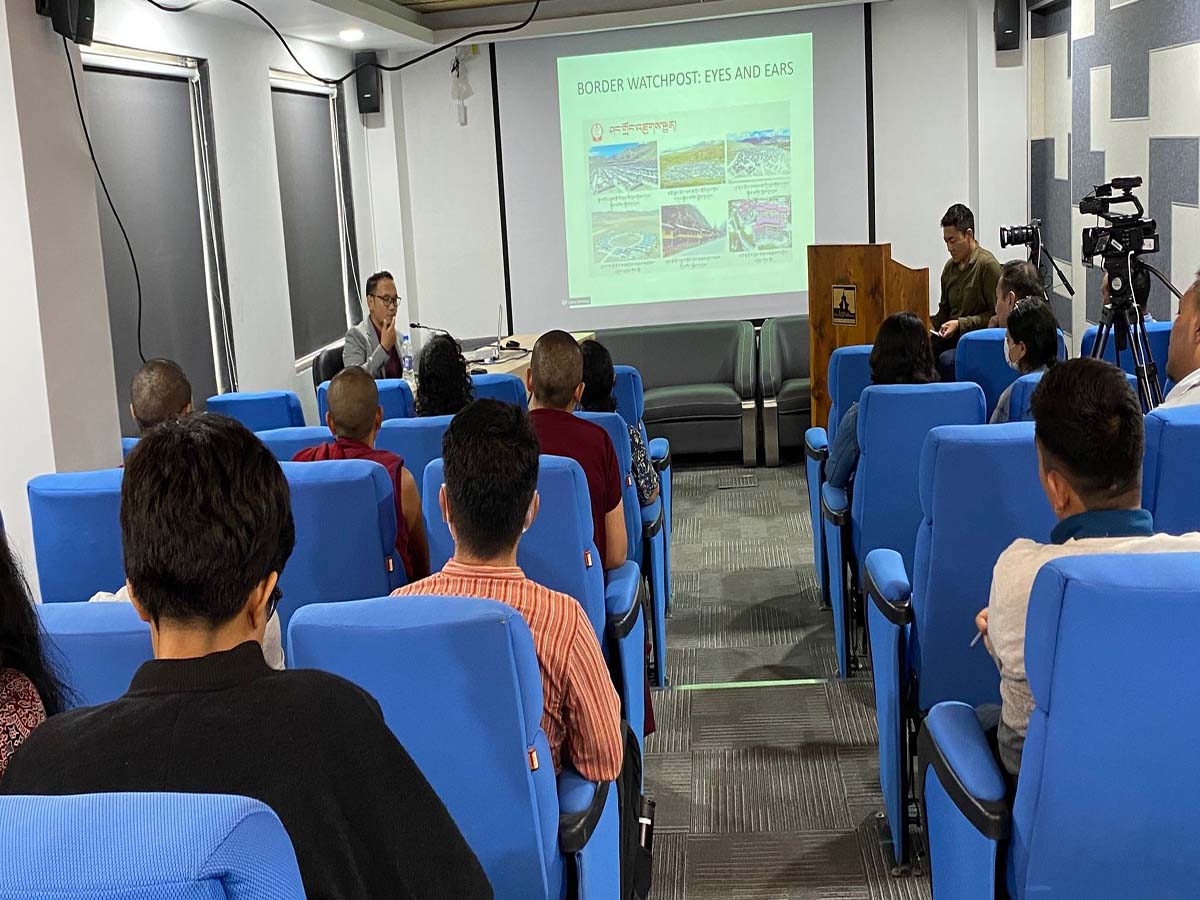The Tibet Awareness Talk Series Program Report: Border Villages in Tibet: Eyes and Ears of the PRC

Dharamshala: On 22nd July 2022, Dr. Tsewang Dorji, Research Fellow at The Tibet Policy Institute, Central Tibetan Administration, Dharamshala, imparted his talk on the topic ”Border Villages in Tibet: Eyes and Ears of the PRC” as a part of The Tibet Museum’s monthly Tibet Awareness Talk series in the auditorium of the Tibet Museum, 2nd Floor, T-Building, Gangchen Kyishong, Dharamshala.
The speaker introduced the topic first by clearing up the concept of Xiaogang (well-off village) within the Himalayan borders, the objective of building these border villages in Tibet, and the Geo-political factors involved while sharing the border with India, Bhutan, and Nepal.

Audiences while Dr. Tsewang Dorji, Research Fellow at The Tibet Policy Institute, Central Tibetan Administration giving his presentation.
After introducing the background of Xiaokang in Tibet, he then shared the purpose of China building these border villages near the Himalayas and shared about October 2017 China’s Tibet Policy under Chinese President Xi Jinping that focused on the stability of the Chinese Communist Party (CCP) leadership for building the comprehensive security structure in the so-called Tibet Autonomous Region (TAR) by the implementation of stationing Chinese border watch posts. He then said, there are more than 6000 Border Villages stationed worldwide. There are 628 Border Villages on the Himalayan border overall and 421 on the Indian border (Ladakh, Sikkim, and Arunachal Pradesh).
The Chinese government stationed people at Border Village in the name of Poverty alleviation where Tibetans from other parts of Tibet are allocated on the border of the Himalayan region and are indirectly used as their Eyes and Ears. Instead of splurging on larger military arms and ammunition around the borders, they built these villages in the name of poverty alleviation, a camouflaging scheme that served their purpose of gathering border information and expanding their territory slowly, especially in the South Asia region. Adding on there are two other implications, that is to monitor Tibetans living inside Tibet and also if any Tibetans from outside enter Tibet.

Audience listening ardently to the speaker’s presentation on the topic ”Border Villages in Tibet: Eyes and Ears of the PRC”
Looking from a critical point of view via Geopolitical perspectives and demographic change, the Chinese government is outgrowing the number of civil informants by forcefully relocating the Tibetans to a geographical area of harsh weather conditions and unsafe locations of the Himalayan border region. By doing this they are not only jeopardizing their livelihood but also eliminating the original tradition and culture of Tibetan.
The speaker then concluded his presentation by focusing on the consequences involved with the Border demarcation, the biggest implication of the Chinese army gradually crossing the border and building broader roads for military movement in the name of building roads for the border village.
He then gave quick light on China’s Belt and Road Initiative and how important it is for China to expand its policy to have an upper hand in Geo-Political and Power Hegemony in the world.
The event then concluded after an interactive question and answer session where the audience raised the question regarding the India and Tibet policy, border status, and issues.
~Reported by: Kunga Choedon
